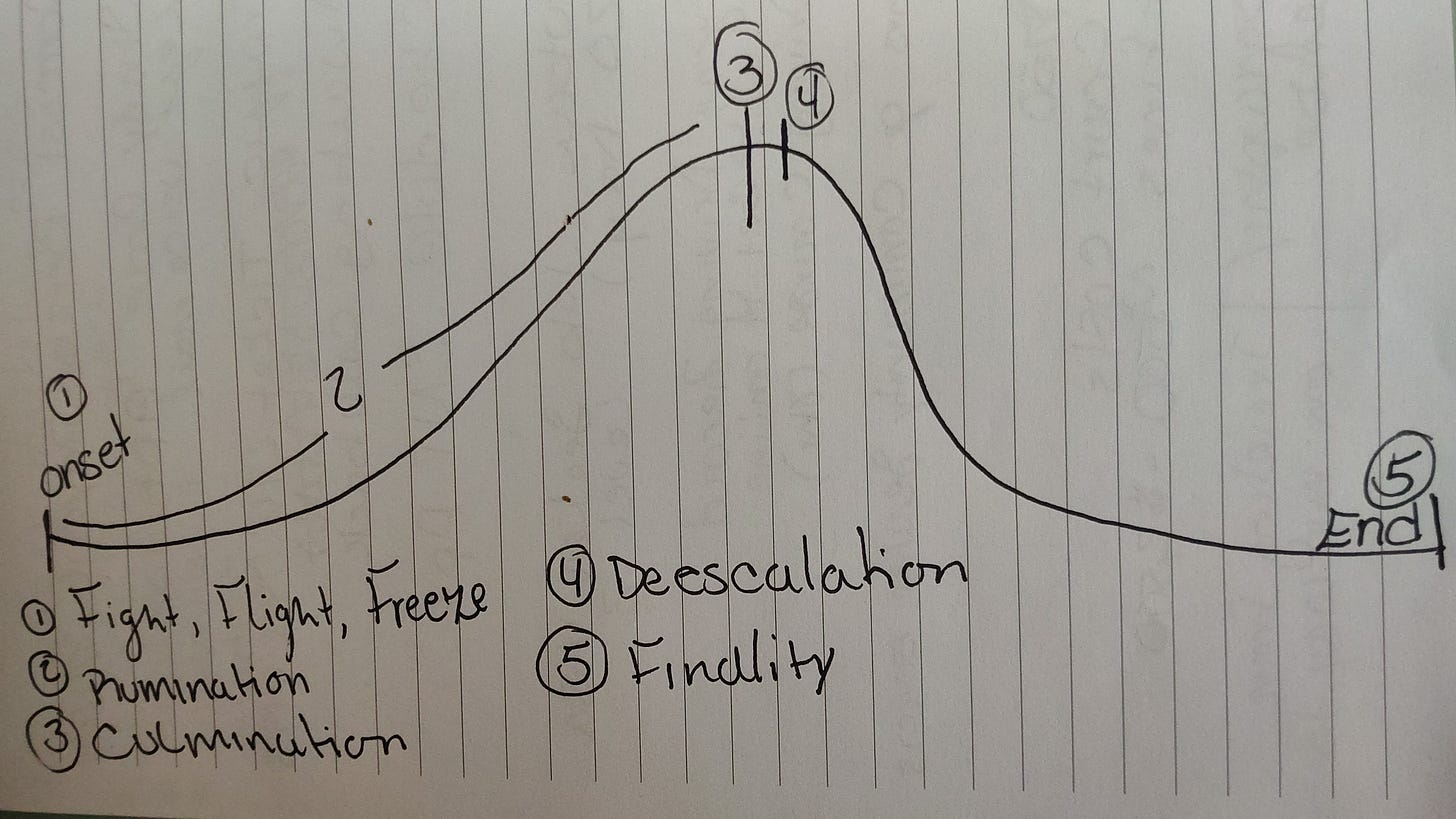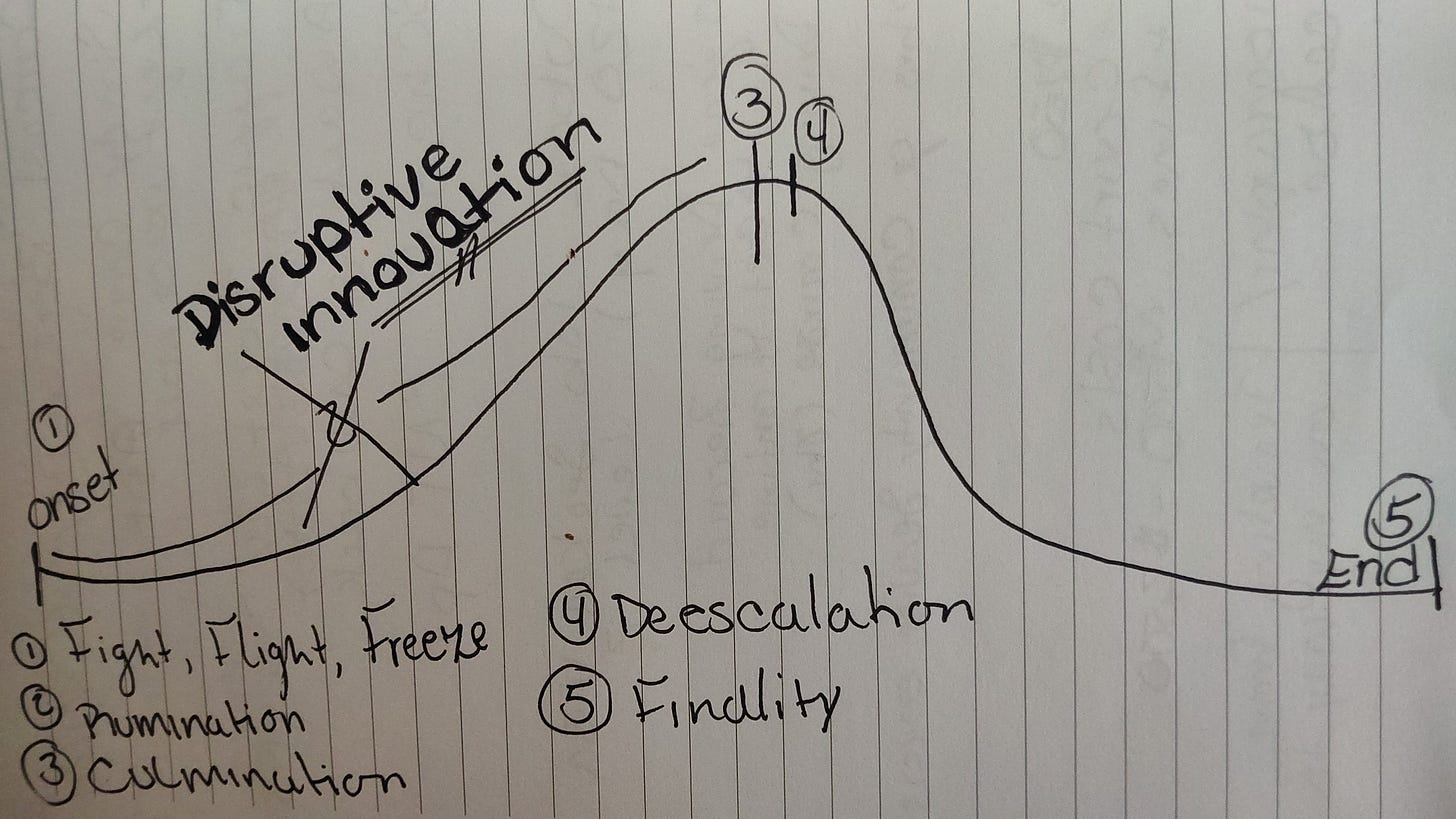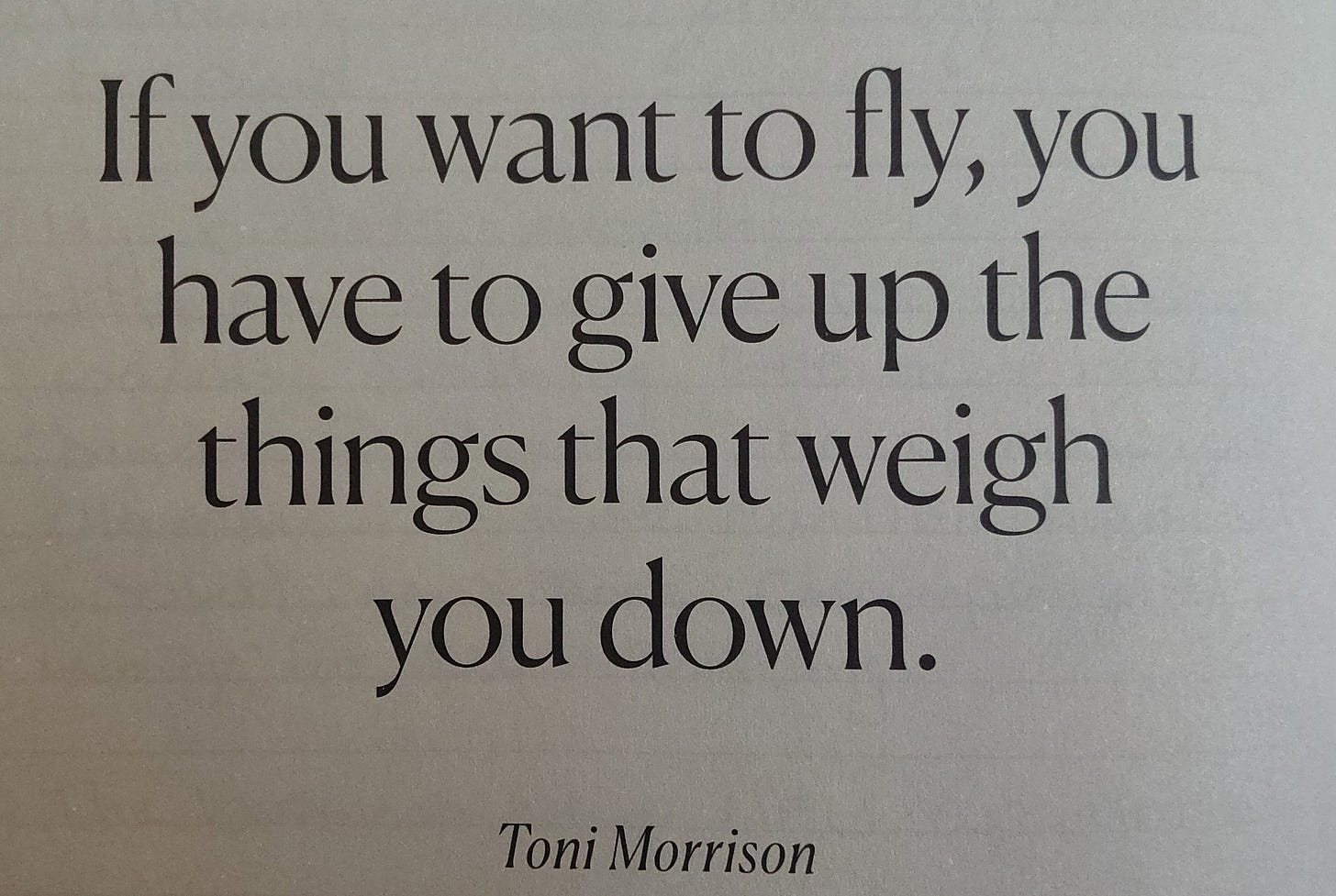Breaking the Loop Pt.2: The Turning Point in Conflict💔
The Truth Hurts—But Impulses are What’s Killing You
In A Few Good Men, Jack Nicholson’s character bellows, “You can’t handle the truth!” Whether you’ve seen the movie or not, you’ve heard that line. It’s become a cultural shorthand for the uncomfortable reality that truth isn’t always comfortable.
It can be particularly unpleasant when there’s a conflict where the truth hurts and “failure” looms.
The Frailty of Truth
Truth is duplicitous.
It can be both liberating and persecuting.
It offers reprieve and at other times, inflicts suffering.
Truth is duplicitous. It can be both liberating and persecuting.
Dr. Martin Luther King Jr. said, "Our lives begin to end the day we become silent about things that matter." That’s truth as a force for justice.
Then there’s the chilling similarity where it was once also said,
"I can fight only for something that I love, love only what I respect, and respect only what I at least know". Here, truth is twisted into inhumane injustice first spoken by Hitler.
Truth is rarely a single, immutable fact.
Often it’s shaped by our unique experience, crafted by perception, morals, culture, language, and bias.
So when we find ourselves locked in a conflict where truth is subjective, how might we make space for another person’s truth without sacrificing our own convictions?
Where do we draw the line and how do we come away from past “failed” tries better?
The Truth in Conflict
In Part 1: Breaking the Loop, I explored how our history of conflict can be turned into "intelligent failures" using a proactive plan. I also shared that as I wrote, I was in the midst of a high-stakes disagreement with someone I love. A week has since passed and today, I want to continue with the progression of the conflict and how I changed my approach—hopefully for good.
Let’s dive in -
As I mentioned, my partner and I were at an impasse.
We’d gone five days in a western-like standoff with beliefs as our weapons and our words the ammunition. We were on opposing sides because of our values and not progressing in overcoming this seemingly impossible dispute.
As I found in my own relationship, the hardest part wasn’t just confronting the truth of my beliefs but recognizing and honoring my partner’s. In a disagreement, each person’s truth exists as a separate, yet equally valid, reality. The trick lies in how we can navigate the space between them.
After day 1, I was resolute that I would approach this conflict differently than I have in the past.
Conflict, The Old Way
For years, my conflicts followed a routine impulse cycle:
Onset (Start of Conflict) – This is the beginning of the disagreement before emotions and reactions escalate.
Fight, Flight, Freeze – The initial emotional response to conflict. Where I fight (push perspective aggressively), flee (avoid the discussion), or freeze (feel paralyzed and unable to respond effectively).
Rumination – This is where overthinking kicks in. I’d replay arguments, dwell on what was said (or unsaid), and mentally prepare counterarguments.
This stage often heightens emotional distress.Culmination (Peak of Conflict) – The argument reaches its highest intensity. This is when emotions are high, and rational thinking is low.
De-escalation – After the peak, the conflict naturally starts to slow down, either because one or both of us begin to calm down or withdraw.
Finality (Resolution or End of Conflict) – The conflict is either resolved, left unresolved, or results in a relationship shift (e.g., reconciliation, distance, or separation).
When I faced the dispute again, I usually would ensure I wore invisible armor. The problem is that as much as it prevented me from feeling pain it also limited my empathy due to the numbing effects. Many of us do this to appear strong while defending our own truths.
If we’re all honest with past conflicts, what percentage end in a lesson learned or even true resolution? Perhaps a handfull. But more often, they become yet another uncomfortable event we’d soon hope to forget.
Sound familiar? This cycle has played out in my friendships, my past marriage, and now, my current relationship. This was a pattern that has probably lived with me for over two decades. But this time, I knew I had to rewrite the blueprint.
The New Blueprint
After researching failure and it’s power to expedite growth, I saw an opportunity to apply these lessons to conflict. Instead of treating arguments as truth battles to be won, I shifted my mindset. The objective wasn’t to manipulate the outcome, it was to change my relationship with the conflict itself.
The objective wasn’t to manipulate the outcome,
it was to change my relationship with the conflict itself.
By embracing this new blueprint, I realized that handling the truth didn’t mean ‘winning’ an argument or avoiding it—it meant surrendering to the process of learning. The truth about myself, my reactions and habits, and even about the other person, became less rigid and more fluid. This wasn’t about being right; it was about having the courage to love myself and the other person harder in this moment regardless of the outcome.
Handling the Truth Starts with Handling Our Impulses
I rewrote the script by using a disruption technique.
I needed to cut out the rumination that has long been a thief of energy. It caused more physical harm and placed me in a constant state of anxiousness that would never be beneficial for hearing, loving, or seeking real truth.
After the onset of the argument, I took a few days to myself to grieve and accept that I was not in control of the final outcome, as it always takes two to reach an agreement.
I then did a practice I love called Centering Prayer Contemplative Meditation1 by Fr. Thomas Keating which aims to fill our consciousness with hope rather than empty the mind.
I focused on my beliefs, sought wisdom, and knew that I only had control of my presence in the moment of the dispute which included my tone, words, and actions.
I made an effort to think of innovative ways I could experiment to break the mold of past behavior so I would show-up differently.
Here’s the final disruptive process:
Stopped the mental hamster wheel. Rumination leads to repeated suffering.
I accepted what I couldn’t control. The outcome didn’t rest solely on me.
I practiced getting grounded in a perfect source of peace by Centering Prayer.
I experimented. Instead of defaulting to old behaviors, I tried new ways to engage. I softened my defenses, asked different questions, and listened more.
The End—Or a New Beginning?
I wish I could say I emerged as a flawless diplomat, bringing perfect peace and clarity to the situation. I didn’t. But I did change how I engaged with conflict. And for the first time, I felt like I wasn’t just reacting—I was growing and able to slow down because of this disruption technique.
With more practice, I hope to make this new approach my default. If nothing else, I’m learning that sometimes, handling the truth starts with handling ourselves first because sticking to old cycles can be deadly.
Don’t think I forgot—By now you’re probably wondering did my relationship survive? Yes, and I feel full of love for what we were able to overcome.
📢 **Thank you for reading. Let me know if this sparked any thoughts or, if you have any conflict tips to share for the community.
I keep coming back to the idea that perfection is an illusion, but growth is real.
How do we each limit how much we glorify success and find better ways for us all to progress without the fear of failure?
I don’t have all the answers but as we each continue to be curious about this topic I’m confident we’ll find a lot of nuggets along the way, and hey - maybe have some fun failing while we’re at it.
Fail well my friends,
Leyla
Centering Prayer is a method of silent prayer that prepares us to receive the gift of contemplative prayer, prayer in which we experience God's presence within us, closer than breathing, closer than thinking, closer than consciousness itself.









